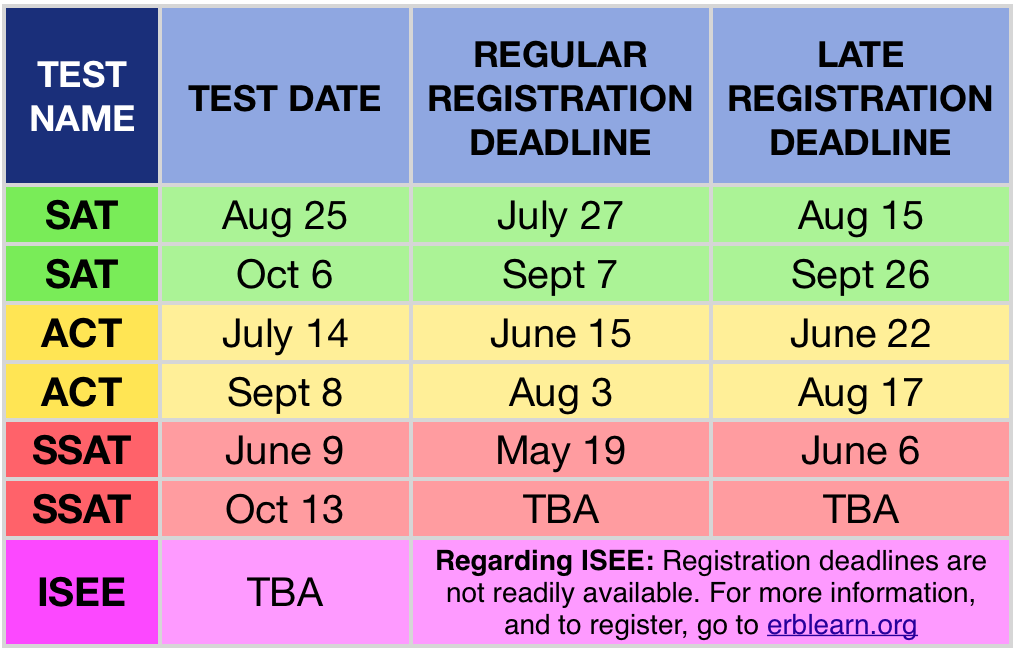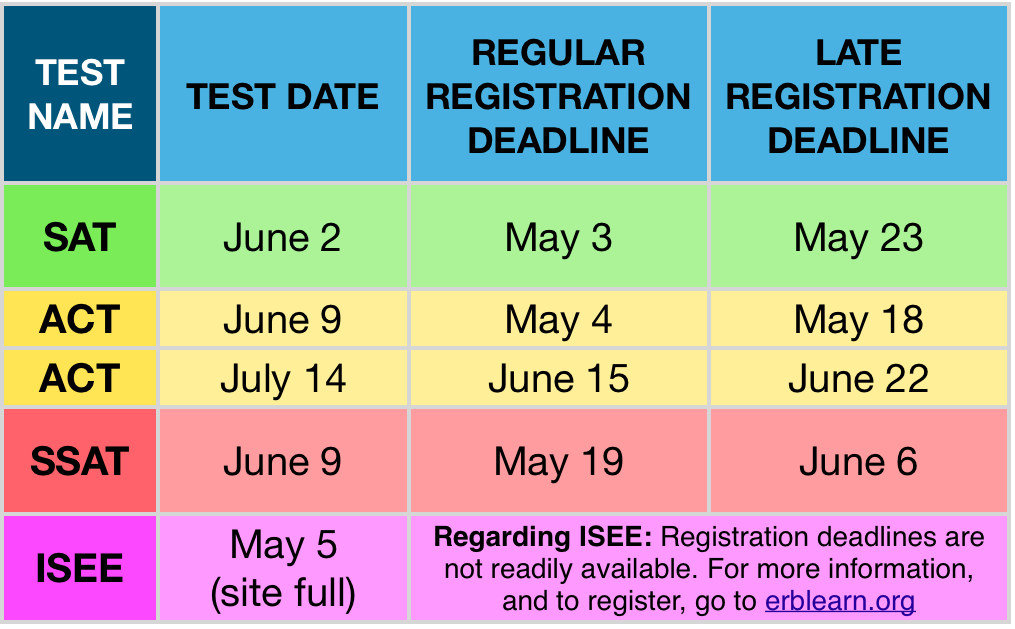Mark your calendar for the latest test dates.
7 Unique Jersey Shore Spots You’ve Likely Missed
The first day of school is looming in our thoughts these days. If you are you heading to the Shore one more time before bidding farewell to summer, we have 7 interesting, educational, unique, and just plain fun destinations for you to visit. There’s still time to build those summertime memories!
Bivalve?
Once a prosperous oystering town, the tiny hamlet of Bivalve is home to the Rutgers shellfish research laboratory, The Bayshore Center and the Delaware Bay Museum is a unique place where you can step back in time to the 1920’s and visit the thriving oyster industry of Maurice River Cove. Exhibits there engage visitors in the living history of the Delaware Bay through hands-on, interactive, and inquiry-based exhibits. Bivalve is also home to New Jersey's official tall ship, the A. J. Meerwald(see photo above) which offers programs and sailing adventures not to be missed. Bivalve's salt marsh provides a vital habitat for plants and animals, including migrating birds and spawning species. Enjoy 5 miles of walkways, birding sites, observation platforms, and the best sunsets ever! Bivalve is well worth exploring.
South Cape May Meadows Preserve – a birder’s dream!
Did you know that one of the prime viewing spots for birding on the east coast is right here in New Jersey? At South Cape May Meadows in West Cape May and Lower Township you’ll find 200 acres of dunes, wetlands, meadows, and a mile of protected beach. Bear in mind that beach use is restricted to nature viewing only from March 15-August 31. The trails are marked if you want to stroll on your own, but you might want to consider a guided walk offered by the New Jersey Audubon’s Cape May Bird Observatory. Make sure to bring along your binoculars!
Sedge Island
Pack a picnic and head to New Jersey’s first marine conservation zone! Sedge Island is a bit of Eden right in the middle of the Barnegat Bay. Visit the Sedge Island Natural Resource Education Center and learn about the uniqueness of the area, including the fact that the island is a protection site for the diamondback terrapin that breeds there. Kayaking tours, marsh walking, birding, crabbing and clamming, and no crowds, no noise, no traffic. What could be better?
Mantoloking Bridge County Park
This two-and-a-half-acre park has been beautifully reconstructed after being hit by Hurricane Sandy and is a lovely place for the family to spend the day picnicking, fishing, crabbing, and enjoying park activities. You can avoid the summertime crush at the Shore and enjoy the awesome waterfront views, 70- foot long pier, boardwalk and gazebo. This is a beautiful place to quietly spend some family time before summer’s end. The park is located on the Brick side of the bridge over Barnegat Bay leading into Mantoloking.
The Giant Wheel, Wildwood
Visible from the Garden State Parkway, Wildwood’s Giant Wheel stands 15 stories high and is illuminated with 92,400 lights. It was delivered by boat 33 years ago, originating from Holland. There are, of course, many other rides on the pier, but the Giant Wheel can’t be overlooked. The best time to ride is at night, when you’ll rise far above the crowds and enjoy the magnificent vista. Might as well enjoy some sugary funnel cake while you’re there!
Is it a whale? An antique rocket ship?
For a really different destination, head to Sea Girt and visit the National Guard Militia Museum of New Jersey. That 28-foot-long concrete egg-shaped vehicle is an actual hand-cranked submarine, planned to be the great secret weapon of the Civil War. It’s certainly the oddest vessel to be found there, but in the collection, you’ll also find an amphibious Jeep vehicle, the only automobile to have circumnavigated the globe.
Absecon Lighthouse
Everyone knows about the Cape May Lighthouse and Old Barney on LBI, but the tallest lighthouse in New Jersey is the Absecon Lighthouse in Atlantic City. It’s the only lighthouse in the state with its original first-order Fresnel lens. Visitors can climb the 228 steps to get to the top and there they’ll be rewarded with a breathtaking 360-degree panorama. The Absecon Lighthouse is 171 feet tall, 161 years old, and remains the third tallest lighthouse in the US.
So there you have it! Seven great ideas for unique places to visit with your family before you getting back into school-mode. Check out their individual websites for more information, including fun educational programs and creative opportunities. Have fun making memories!
You Can Do It: Sharpie Seashells
You’ve been to the shore and inevitably you’ve come home with bags of shells that the kids have collected. Here’s a fun and beautiful project that is appropriate for most any age. All you need is a selection of shells (shells with ridges work best) cleaned up and dried off, and a thin-tip Sharpie marker. Take a look at this photo for inspiration, and let your imagination run wild!
Letter from Betty for July 2018
Hello Friends,
After graduating from school and becoming a young adult, you probably continued your learning by delving into areas that were of particular interest to you. Fortunately, all of life can be viewed as "continuing education" since we can, and often do, continue to discover new facets of the world around. While you don't have to be explicit about your plans for your children this summer, you can be intentional about keeping the learning going. We have some great ideas about this in our feature article for July, "Using Cooking To Teach Math and Science."
To give you some very specific ingredients, directions, and inspiration for family cooking (and math and science) time, we have tasty suggestions in our bonus article for this month: "You Can Do It: Recipes!" Enjoy!
Whatever your educational needs, Foundation for Learning is ready to assist you with caring, one-on-one, individualized tutoring, and ISEE/SSAT test prep.
Don't hesitate to give us a call at 973-425-1774 or send an email to betty.foundationforlearning@gmail.com for a free consultation.
Best regards,
Betty
July 2018 Test Schedule
Mark your calendar for the latest test dates.
Using Cooking To Teach Math and Science
Cooking is a creative and active way to keep young minds working and learning over the summer break. It's an excellent way to help kids focus on math and science without them know it. Get everyone into the kitchen and get cooking!
Cooking involves basic math and science. It includes fractions and measurement as well as chemical and physical reactions, observation, and data collection. There’s also a yummy reward at the end of every lesson. What better motivation for your children to join in!
Think about it:
- Water is a perfect ingredient to use to talk about liquid, gases, and solids, and it’s something we all use every day.
- Cookie dough starts out soft when the treats come out of the oven but hardens as they cool. Cake and brownie batter is in liquid form prior to baking, but once baked it becomes a solid form. And let’s not forget about pancakes! Liquid batter reacts to the hot griddle by solidifying, then delicious solid butter melts and drip over the top. Breakfast is served!
- Finally, when frozen, cream miraculously (with a few added tasty ingredients) becomes ice cream!
Physical changes happen as temperature changes. What a fun way to teach how temperature affects states of matter!
There are also chemical reactions that occur when making pancakes or baked goods. Yeast, baking soda, and baking powder, with the help of a bit of sugar and salt, cause great chemical reactions. You can show your children the bubbles that develop when carbon dioxide is created by combining ingredients. They can watch and understand why their baked goods rise. Now that’s a tasty chemical reaction!
But what about math? Cooking involves counting, ordering of steps, computation, volume, fractions, and weight measurements.
Get everyone into the kitchen this summer and whip up delicious meals and treats. They’ll never know that they’re working on science and math over their summer vacations!
You Can Do It: Recipes!
Chocolate Chunk Cookies
Ingredients:
- 2 cups plus 3 tablespoons all-purpose flour
- 3/4 teaspoon kosher salt
- 3/4 teaspoon baking soda
- 2 sticks unsalted butter, at room temperature
- 1 cup granulated sugar
- 1/3 cup dark brown sugar
- 2 large eggs
- 1 1/2 teaspoons pure vanilla extract
- 1 (5-ounce) block semisweet chocolate, chopped into chunks
Directions:
Preheat the oven to 375 degrees F. Line baking sheet with parchment paper or silicon pads.
Whisk together the flour, salt and baking soda in a large bowl.
Place the butter in the bowl on an electric stand mixer fitted with paddle attachment and beat until smooth, about 1 minute. Add the sugars and continue mixing, scraping down the sides and bottom of the bowl until light and fluffy, about 2 minutes longer.
Add the eggs, 1 at a time, and the vanilla extract, beating until incorporated. Add half of the flour and mix until just incorporated. Add the remaining flour, again mixing until just combined. Remove the bowl from the stand and fold in the chocolate chunks.
Using a small ice cream scoop, spoon the dough onto a baking sheet, leaving at least 2 inches between each cookie and bake on the middle rack until the cookies are lightly golden brown and still soft in the middle, about 11 minutes. Let cookies rest for 2 minutes on the baking sheet before removing them to a baking rack with a wide metal spatula. Let the cookies cool on the baking rack for a few minutes before eating. Repeat with remaining dough.
Banana Pancakes
Ingredients:
- 1 1/2 cups all-purpose flour
- 1 tablespoon sugar
- 1/2 teaspoon salt
- 1 teaspoon baking soda
- 1 teaspoon baking powder
- 1 large egg
- 1 cup buttermilk
- 1/4 cup whole milk
- 1 tablespoon melted unsalted butter, plus 3 tablespoons
- 3 ripe bananas, cut into 1/3-inch slices
Directions:
Preheat oven to 200 degrees. In large bowl sift together flour, sugar, salt, baking soda and baking powder. In separate bowl whisk together egg, buttermilk, milk and melted butter. Slowly combine the dry ingredients with the wet ingredients. Stir until the flour disappears, but being careful not to over beat the batter. In a large cast-iron skillet, melt about 1/2 tablespoon remaining butter. Ladle about 1/4 cup of batter into the pan for each pancake. Immediately press 4 or 5 banana slices into each so the batter oozes slightly over the fruit. Cook until bubbles appear and then flip and cook on the other side, about 3 minutes total. Transfer the pancakes to a platter and keep warm in the oven while you cook the remaining batches, adding butter to the pan as needed. Serve hot with syrup.
No-Churn Strawberry Ice Cream
Ingredients:
- 1 pound frozen strawberries, thawed at room temperature for 10 minutes
- One 14-ounce can sweetened condensed milk
- 1 teaspoon pure vanilla extract
- Pinch fine salt
- 2 cups heavy cream, cold
Directions:
Special equipment: A 9-by-5-by-3-inch metal loaf pan, chilled
For the ice cream: Pulse the strawberries in a food processor until you achieve pea-size chunks. Add the condensed milk, vanilla and salt. Pulse to combine; remove to a medium bowl and set aside.
Whip the cream with a mixer on medium-high speed until firm peaks form, about 2 minutes. Fold about 1 cup of the whipped cream into the strawberry mixture with a rubber spatula until combined, then fold the lightened mixture into the whipped cream until well blended. Pour into a chilled 9-by-5-by-3-inch metal loaf pan, and freeze, covered, until thick and creamy, like soft-serve, about 2 hours. Swirl in any desired mix-ins with a spoon. Continue to freeze, covered, until solid and scoopable, about 3 hours more.
Letter from Betty for June 2018
Hello Friends,
Have you ever heard of a person who "never met a stranger"—someone who gets along well with just about everyone, in every circumstance? That is certainly an admirable skill. One of the first strategies in becoming such a confident "people person" is to treat everyone you meet as an individual, rather than a member of a group. In our feature article this month, we offer ideas on how children can develop valuable social skills in "Helping Children Resist Stereotyping."
Summer beckons us to run out into the warm sunshine for outdoor fun and adventure. But in the midst of a myriad of get-up-and-go distractions, don't forget to encourage your children to pursue quiet creative projects in the cool shade. We've got ideas in our bonus article for June, "Guided Creativity for Summertime Fun." Happy creating!
Whatever your educational needs, Foundation for Learning is ready to assist you with caring, one-on-one, individualized tutoring, and ISEE/SSAT test prep.
Don't hesitate to give us a call at 973-425-1774 or send an email to betty.foundationforlearning@gmail.com for a free consultation.
Best regards,
Betty
June 2018 Test Schedule
Mark your calendar for the latest test dates.
Helping Children Resist Stereotyping
Parents know that how they speak to their children and other adults has a tremendous impact on their children.They are sponges, soaking up the world around them, internalizing what they hear, and mimicking back those thoughts, ideas, and beliefs. It’s important that they are aware of their words and actions if they want to help erase the generalizations that lead to many problems in our society.
It’s a sad truth that by the time children enter the elementary grades, race and gender ideas already shape their experience. It’s been repeatedly shown that in these early years, girls are less likely to think they are as smart as the boys in their class. These thoughts, as well as beliefs about racial differences, actually also shape behavior. It effects how children choose activities, who they choose to group with, and what they think about themselves. These thoughts and early beliefs contribute to their long-term gender and racial ideas.
Where do these stereotypes come from? Early social and cognitive experiences contribute heavily to the tendency to view the world in a particular way. How parents speak can be more important that the actual words they use. Generalizations can send the message that we can tell what a person is like just by knowing certain things about them, like their religion, where they live, their dress, their ethnicity or their gender. Parents need to talk about people as individuals rather than as a homogeneous group. If children only hear information presented as a generalization, they’ll likely start thinking in terms of “us” and “them.” “They” are different from everyone else and being a member of that group dictates what a member of that group will be like. Hearing these broad statements, even if they’re positive, contributes to the likelihood that children will view their world through these lenses, even into adulthood. Their way of thinking about people, the assumptions they make, and their own behaviors can be impacted.
Parents need to be careful to use specifics rather than general claims. “That girl is great at math,” “That family is vegetarian and doesn’t eat meat,” “His family lives in an apartment,” “That mother plays the guitar,” Talking about an individual and using specific language steers a conversation or the thinking away from generalizing about a whole group, gender, race or religion of people.
If your children make a sweeping statement about a group of people, guide the conversation and find out what/who they are specifically thinking of, and you may find that they have someone specific in mind. You can then encourage them to consider the individual and lead them away from making a generalization. Bear in mind though, that early on, children speak out in this way because they’re “testing the waters,” to see if their thinking is correct. Your reply as a parent is valuable at this point, so be aware of the words you use when you respond.
Obviously, parents can’t control their children’s exposure to all instances of gender and racial stereotyping they’ll likely experience during their day, but parents do have a significant influence in setting the stage for and accepting and understanding a healthy set of societal values and norms. Children are listening, watching, learning, and developing their sense of how the world works and adults need to understand that every interaction with them counts, from their tender young age through their teens and into young adulthood. Parents can launch healthy, compassionate, caring offspring into the community and the world, with a point of view that challenges rather than sanctions the stereotyped perspective of the people and situations they may encounter. To paraphrase the song, we canteach our children well.
Guided Creativity for Summertime Fun
This month we have a suggestion for unique summertime fun. Guided creativity books provide fabulous quiet-time entertainment. Nurturing creativity with a series of prompts, these books help to spark imagination, foster inventiveness, and encourage your child or teen to perhaps start looking at the world a little differently.
Our teen recommendation is a book by Austin Kleon called The Steal Like an Artist Journal. It is an interactive journal, a place to get creative juices flowing and a fun way to keep a log of ideas, thoughts and discoveries. This is not a kid’s book at all, parents might want to purchase one for themselves and explore the prompts that lead the reader to think about things in an all new way, to let their creativity run wild and unfettered.
For younger children, Ed Emberley Drawing Books, is a series full of fun items to draw and definitely is not a “color within the lines” experience. You may want to sit next to your child to help explain the various activities, but the books are designed to be easily understood by even the youngest child and are full of activity examples for each exercise. Each book explores a different topic, so parents will easily find a book to suit their child’s fancy.
These books are readily available online at Amazon and Barnes and Noble or you can find them at your favorite local book shop, so pick one up, store it away and pull it out when school lets out and summer vacation begins!
Letter from Betty for May 2018
Hello Friends,
Did you grow up in a family with brothers and sisters? If so, was it all holding hands and group hugs and singing "Kumbaya?" Probably not. Sure, there was so many great times. But along the way, you likely experienced conflicts and competing desires and hurt feelings. As hard as some of those conflicts were, you also probably arrived at adulthood relatively unscathed. But parents of multiple children still want to see their children get along and resolve those conflicts smoothly and quickly. Find some timely assistance on this subject in our feature article this month, "Sibling Rivalry - What's a Parent To Do?"
There are two ways to enjoy nature. First there's the "air chair" method, by pouring through photos, paintings, and books. The second option, of course, is by getting out in the weather and stomping around in the real world. However you like to get your full share of Mother Nature, we've got an inspiring bonus article for you this month, "Amazing Butterflies of New Jersey." Will you head for the park to spot as many winged specimens as you can, or simply enjoy the photos? Either way, enjoy!
Whatever your educational needs, Foundation for Learning is ready to assist you with caring, one-on-one, individualized tutoring, and ISEE/SSAT test prep.
Don't hesitate to give us a call at 973-425-1774 or send an email to betty.foundationforlearning@gmail.com for a free consultation.
Best regards,
Betty
May 2018 Test Schedule
Mark your calendar for the latest test dates.
Sibling Rivalry - What's a Parent To Do?
Sibling rivalry…ugh! Every family with more than one child will have to deal with the arguing, name-calling, teasing, and shouting at some point. If the family has a child with chronic health issues or other special needs, the problem may be even more intense. What’s a parent to do?
Be aware that resentments can form if a parent is having to spend more time with a sibling with special needs, the time spent at appointments, the time dealing with public incidents, the extra time spent helping with school work, etc. There can also be bad feelings if the typically developing child has to take on extra duties around the house or feels the pressure to achieve to compensate for his sibling’s challenges.
Does this apply only to families with a child having learning, health or other issues? No! In every family there will be special dynamics that form when one child performs at a higher level in sports, music, academics or in other areas. Resentment and rivalry flourish in those situations and it’s completely normal.
Here are some suggestions for you:
Talk it out
Talk to each child individually. Share age-appropriate information and point out the strengths of their sibling. Be open to questions and do not judge when they express their feelings. Allowing your child to talk freely and to ask questions will help them to feel empowered, and to help them to feel positively about their sibling.
Take advantage of those special, teachable moments
Pay attention and notice when challenging instances pop up. These are opportunities to communicate, teach, and model good behavior. This is how family members learn to support each other and to be tolerant of each other’s differences. Notice too the good times, the good behavior, the moments when the siblings are doing something especially generous for each other. Praise those good moments and there will be good feelings all around.
Consistency matters
It’s important to have set expectations for all family members when it comes to rules, responsibilities, expected behaviors, and consequences. Don’t make exceptions too often. Stick with the house rules as routinely as possible.
Carve out one-on-one time
Spend time each week with each child individually. Engage in some activity that your child particularly enjoys, go to a movie, grab a bite at a favorite diner, take a hike together – whatever allows you two to connect. These moments will be prime times for conversations that allow for the release of pent-up feelings, for the casual sharing of information, and most importantly, for connecting and showing your child that he is worth of your time and attention. This special parent/child time will help to reduce any jealousy about time you need to devote to their siblings, whether they have special needs or not.
But what if you try all of these things and you find that your child is still struggling, emotions are heightening or becoming more frequent? You might want to consider getting extra help from a school counselor, your child’s teacher, your child’s doctor, a sibling support group, your church’s youth minister or a therapist. All of those resources can help your child to explore their feelings and to develop healthy coping strategies.
Above all, remember that family dynamics can be a complicated thing, but that sibling rivalry is completely normal and every family deals with it at some point. I hope I’ve given you a few things to consider. Good luck!
Amazing Butterflies of New Jersey
There are 134 species of butterflies and moths in New Jersey. 134! The spring and summer months are the perfect time to get outside and take a butterfly ID hike. Bring your camera!
Here’s an interesting fact: the monarch is the only butterfly known to make a two-way migration as birds do. Unlike other butterflies that can overwinter as larvae, pupae, or even as adults in some species, monarchs cannot survive the cold winters of northern climates. Some fly as far as 3,000 miles to reach their winter home in Mexico.
Here are some really beautiful butterflies you should search for:
American Copper
Canadian Tiger Swallowtail
Least Skipper
Luna Moth
Monarch
Northern Metalmark
Northern Pearly Eye Satyr
Red Spotted Purple Admiral
Silver Bordered Fritillary
Silvery Blue
Zebra Swallowtail
Letter from Betty for April 2018
Hello Friends,
As we eagerly turn the pages in the thrilling story of another school year, we can see that it will soon draw to its conclusion. So before the final weeks are right on top of us, this is the time to pause and think about how to reduce the stress of this event-filled season. Below find stress relief in our April feature article for, "Teaching Your Children Coping Strategies for Stressful Times."
The time we share as families is naturally centered around meal times. What better time than a family meal time to bond with conversation and fun word games. Get the laughter flowing and the fast flying word wizardry going in our bonus article for this month, "Family Dinner Table Games."
Whatever your educational needs, Foundation for Learning is ready to assist you with caring, one-on-one, individualized tutoring, and ISEE/SSAT test prep.
Don't hesitate to give us a call at 973-425-1774 or send an email to betty.foundationforlearning@gmail.com for a free consultation.
Best regards,
Betty
April 2018 Test Schedule
Mark your calendar for the latest test dates.
Teaching Your Children Coping Strategies for Stressful Times
We look forward to the end of the school year, with the expectations of summertime freedom, the lazy days, camp, and the change of daily routines. However, before we reach those treasured days, there are projects to be turned in, sports tournaments to compete in, standardized testing to take, and much more. High school seniors have even more tasks and activities to squeeze into the calendar. It can be overwhelming for both parents and students. Expect to see heightened anxiety and even the occasional meltdown before that final bell rings.
It’s important that children learn that life can be stressful from time to time and that it’s completely normal. Feeling anxious, overwhelmed, pressured and exhausted are all normal reactions and it’s alright to feel that way. As parents, it’s important to give your children the tools and coping strategies they’ll need to get them through these times; the hard "stuff" that life inevitably throws at us. No matter what the age, children are going to face stress, and at some point, they’ll be out on their own in the world and will need to have these skills. Arm them with techniques to make these times more manageable.
Teach them to Practice Good Self-Care
When life gets too busy, when the to-do list gets too long and the obligations and assignments become overwhelming, it’s tempting to take care of your obligations rather than yourself. The best thing you can do when you become too frazzled is to stop, take a breath, and refocus on your own well-being. The result is you’ll find yourself less stressed and thus, more productive. When your kids feel this way, encourage them to get off of social media and walk the dog, get outside and do something physical - take a shower or a long bath, call a friend, read something – just for fun, get up and stretch, listen to music. Also, it’s helpful to conduct a quick health check to make sure your children are getting enough sleep and down time, drinking enough water, and eating healthy food. It’s a good idea to nudge your children towards these healthy habits when times get tough and especially when their stress levels are on the rise.
Help them to Beat Back their Worries and Avoid Anxious Thoughts
It’s too easy to fall into a self-defeating cycle of stress – being overwhelmed – avoidance or procrastination – stress – being overwhelmed – avoidance or procrastination, and on and on. It’s truly a cycle that’s hard to break when you’re deep into its grasp. When your children go through this, help them learn the art of productive self-talk. We’ve all experienced the phenomenon of worrying about something and automatically jumping to the worst possible conclusion or outcome. We also know that the reality is that the worst possible outcome rarely comes to fruition. Talk to your children, help them to think logically about this worst-case scenario, have them listen to their inner-voice and talk back to it. You can also have them dive into that worst-case outcome and talk about how they can move forward or what their next steps can be should “the worst” really come about. But assure them that in all likelihood, things won’t work out the way they fear. You’re helping them to talk their way out of that vicious cycle, so they can get onto the business at hand in a rational and calm way.
Make a list!
You’ve heard this before, but list making is an effective tool to use in many situations. When your children are over-scheduled and overwhelmed, making a list helps them to organize and plan. It’s a great visual cue and it’s a great way to alleviate the worry that something will be forgotten, because they’ve written in down and can check their list as needed. It clears a bit of important head space. So, make a list with the tasks to be done on one side of the paper, followed by the amount of time it will take to get done, the due date (or where the event lands on the calendar), or some other way to prioritize that makes sense to their particular situation. After each item is completed, have your child cross through it. This is important because it’s a visual way of letting them see their progress, their way through this stressful time. This seems like one more addition to the to-do list, but the effort will be well worth it.
Check your own Focus and Check your Words
Effort, work ethic, attitude: the qualities that your children have control over. Grades, test scores, placement: not so much. As parents, instead of focusing intently on grades, scores, and wins, praise your children for working hard, practicing hard, and taking responsibility. That way, instead of feeling like they’ve failed if they struggle, they’ll know that they can work on the process and the effort, the areas they can change. If your children have always been told they’re smart, or super athletes, brilliant musicians, etc., and then they start to struggle (which inevitably will happen in life), they’re likely to feel like something is wrong with them and maybe even feel ashamed. Let’s praise the effort instead.
Check Yourself!
Are you modeling reasonable behavior and good stress coping skills? Your children will learn from you in many areas of their life and that includes how you yourself handle stressful situations or deal with a full daily schedule. If you lose your cool, take a breath, calm down and begin again. Do you groan about the overwhelming day ahead? Let your children see you prioritizing your time and working out a realistic schedule of activities. Let them also see you decompress. Be a model of good stress management and they’ll take their cue from your good example.
Everyone seems to be stressed these days. Figuring out and working a successful coping plan is important, so work the plan. Your whole family will be better off for your efforts.
Family Dinner Table Games
Fun dinner table games you can play with your family will help to reduce some of the stress you might be feeling this time of year. No need to rush off after the meal is finished, encourage your family to stick around a while longer, relax, and have some fun!
* Build a Story
The first person comes up with one sentence to start off the tale. Going around in turn, each person adds another sentence until someone wants to end the story by saying “The End.” This game is guaranteed to bring hilarious results.
* Say What?
This game starts with someone at the table asking “What happened today that made you say….” and the question ends with a word of their choosing, such as “say what?”, “wow!”, “that’s awesome!”, “gross!”, or whatever other word inspires. This is a great way to share what’s gone on in each other’s day and can lead to discussions and laughs too.
* Crazy ABC’s
Someone picks a category and then says a related word (for example, the category chosen is “animals” and the first word tossed out to the table is “camel”). The next person has to come up with a word that starts with the last letter of that word. (in the above example, the next word would have to start with the letter “l” so the next person could say “llama” or another “l” animal). To make this even more of a challenge, set a timer to go off within a specified time and the table races to name as many animals as possible before the timer goes off.
There are loads of other table-appropriate games that can be played, but these three are a great way to kick off your new after-dinner family time. You’ll be making memories as well as creating much-needed brain-space in everyone’s day. Have fun!
Letter from Betty for March 2018
Hello Friends,
To quote a song: "This time around, you can be anything!" It turns out that a complete change of scenery, a new set of friends, and the freedom to make independent choices are all the necessary ingredients for reinvention in a young person's life, as well as the conditions found at summer camp. Find out about the unique benefits of camp in our feature article this month: "Why You Should Consider Sleep-Away Camp For Your Children This Summer."
March is packed with notable calendar days. Find new and familiar meaning in the days of this month thanks to The Old Farmer's Almanac in our bonus article: "From Blue Moons to Green Clovers: Fun Facts for March."
Whatever your educational needs, Foundation for Learning is ready to assist you with caring, one-on-one, individualized tutoring, and ISEE/SSAT test prep.
Don't hesitate to give us a call at 973-425-1774 or send an email to betty.foundationforlearning@gmail.com for a free consultation.
Best regards,
Betty












































